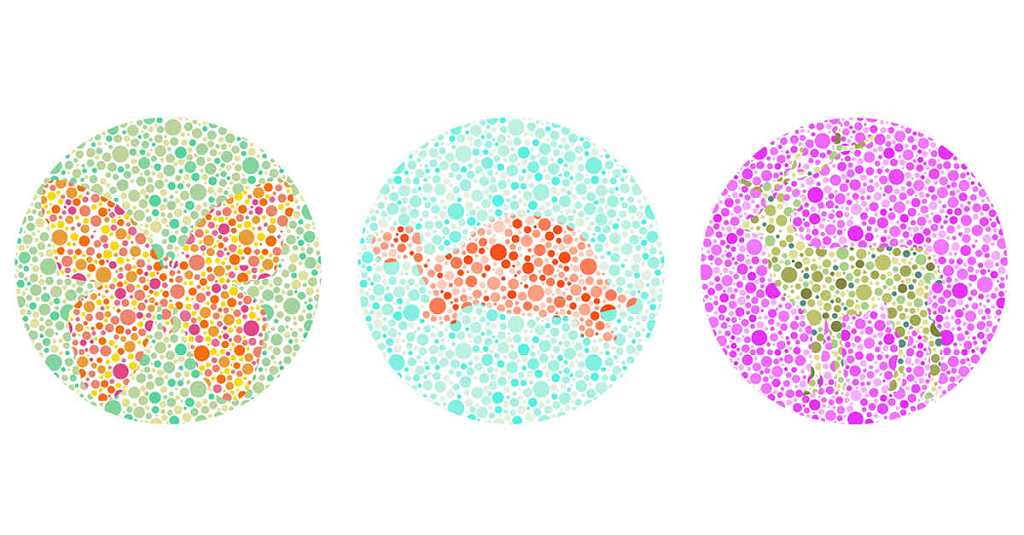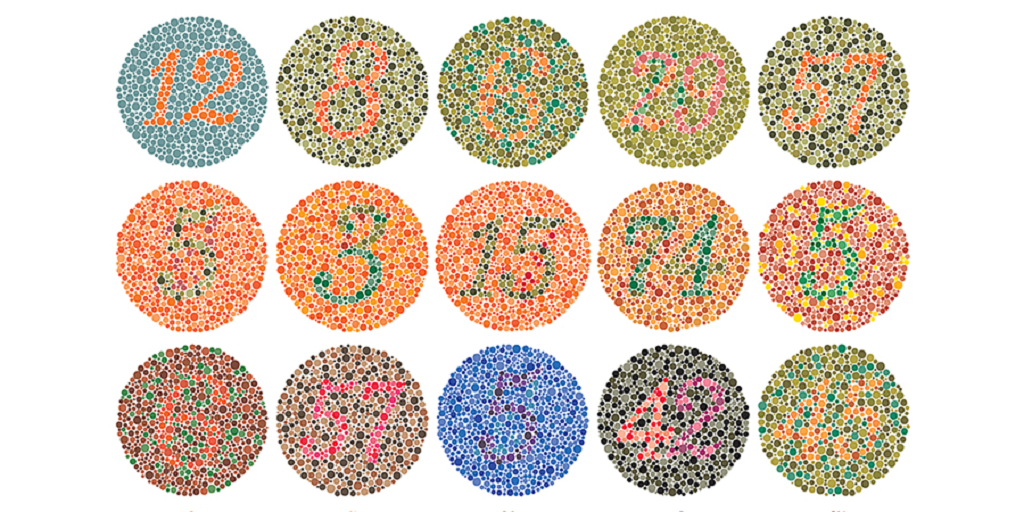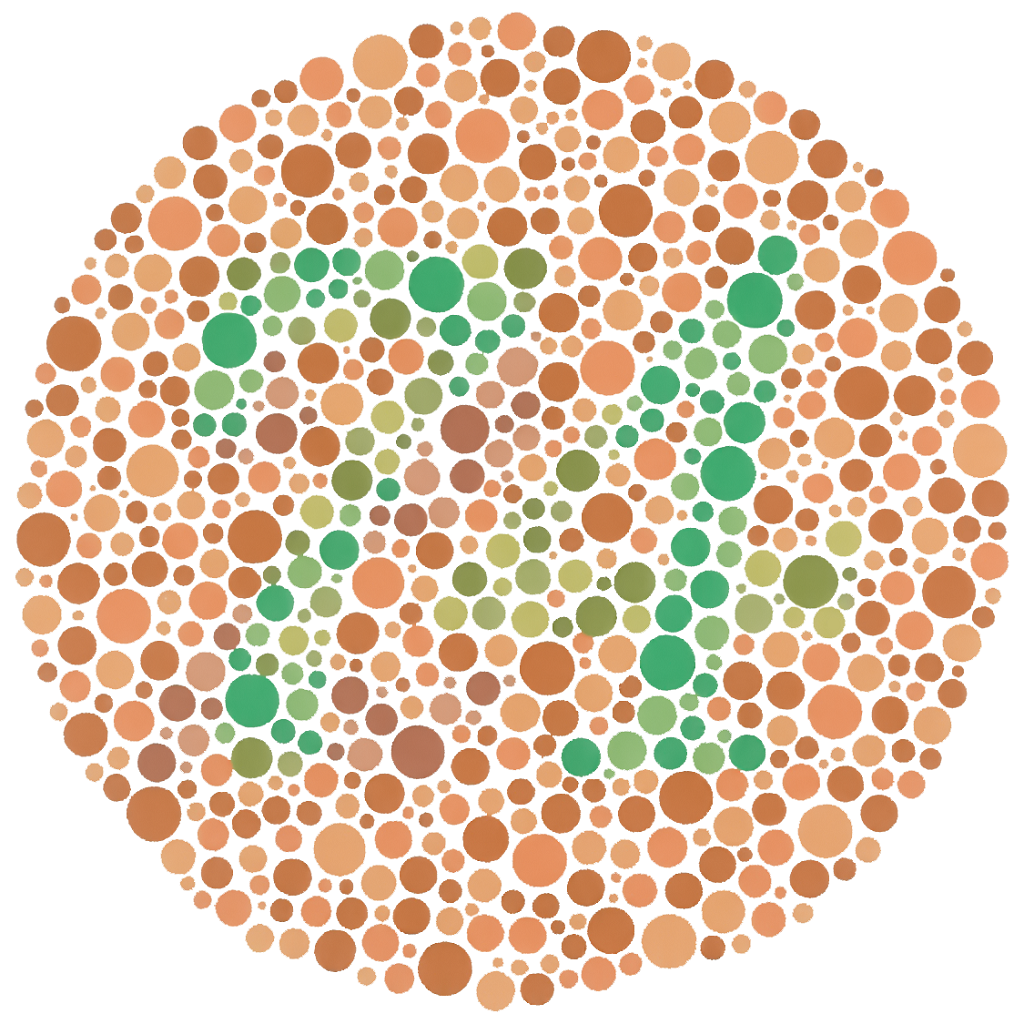Is it true that colour blindness only affects boys? False. While it is estimated that up to 8% of boys have some degree of colour blindness (also called impairment in colour perception), it is also true that 1% of girls have it. That’s roughly one in 12 boys and one in 200 girls. So can women be colour blind – it’s quite rare, but most certainly possible. Let’s explain.
Can Women Be Colour Blind? Yes, Here’s Why!
What is colour blindness?
Colour blindness is an abnormality of the retina. This membrane is made up of millions of photoreceptor cells: cones and rods. In this specific context, it is the cones that interest us since they are the ones that are involved in the process of colour vision. They fall into three categories according to their sensitivity to the colour red, blue and green.
In a colour blind person, one or more types of cones have an abnormality that results in a false perception of colours and not an inversion.
Colour blindness is diagnosed by an ophthalmologist, the only one authorized to pass specific tests using coloured cards.
What are the causes of colour blindness?

Colour blindness results from a genetic disorder carried by the X chromosome. It should be noted that men are ten times more likely to inherit the disorder than women. Why? Because they only have one X chromosome. Women, having two, will be able to benefit from the healthy gene carried by an X chromosome which will then compensate for the genetic abnormality carried by the other X chromosome. A woman can therefore carry a damaged X chromosome without the anomaly revealing itself. But she is still likely to pass it on to her children.
Colour blindness has different causes, but in the majority of cases, the disease is inherited and is transmitted genetically from the mother through the 2 rd chromosome, which is a certain chromosome that determines the sex of the child. For a boy to suffer from red-green colourblindness, his X chromosome must carry the defective colour blind gene.
On the other hand, the defective gene must be present on both X chromosomes for girls, hence the greater prevalence of red-green colour blindness in boys. Note, however, that colour blindness in blue affects both boys and girls, because the gene that causes it is carried by a chromosome that is not involved in determining sex.
What do people with colour blindness see?
Most people who are colour blind see things as clearly as others, but they cannot fully distinguish red, green, or blue light. In some rarer cases, people who are colour blind cannot see any colour.
Taper cells in the retina of the eye (called cones) are divided into three groups – red, blue, and green – based on their sensitivity to certain colours or combinations of colours. If these cones are not functioning properly, the brain receives inaccurate messages about colours. For example, the green traffic light may appear beige or gray.

The most common form of colour blindness is the red-green deficit, which means that anything that contains red or green cannot be seen completely. It means it goes beyond red and green.
For the red-green colour blind person, purples and blues may be indistinguishable, because the red component which is 50% of the purple colour will not be visible.
A person can also become colour blind due to a disease, such as diabetes or multiple sclerosis, but also over time as a result of aging or the use of certain medications, such as antibiotics and antihypertensives.
Here’s how colour blindness was first detected:
The forms of colour blindness vary from mild and moderate to very severe. Some affected people don’t even know they are colour blind. As you already know, colour blindness is not a phenomenon that raises crowds and creates a buzz! But although more and more people have at least a vague idea of what it is, it is extremely rare that they are aware that women can be affected. Colour blindness was first published in a scientific article in 1798 by John Dalton. He talks about colour vision disorders, but at the time, it was impossible to identify those affected or not.
Ishihara test plates:

It will then be necessary to wait until 1917 to have the Ishihara test and to be able to begin to correctly detect colour blindness. This test was of course not very well known at the time, and few people (men and women) were screened.
It was not until 1986 that Nathans and Piantanida discovered that the genes which code for the opsins of the “green” and “red” cones are located on the X chromosome.
The discovery of 8% of boys to 1% of girls:
Clearly, since the 1800s, we started to talk about colour vision disorder. During the 19th century and a majority of the 20th century, we consider the existence of this anomaly and the tests (sporadic) are quite clear: men are affected, women do not seem to.
Indeed, when we see the difference in proportions, it is easy to conclude that the rare women with this deficiency are false positives. Not to mention the fact that this kind of test was practiced at the time almost exclusively for the professional environment, very little frequented by women. In addition, as is often the case when a fact is reported, it is easy to transform “don’t seem” to “not affected”.
It was therefore not until the very end of the 20th century (very recent!) That it was proven that women can be affected by colour blindness, and that we understand why there are fewer of them. But again, it didn’t make the headlines! And given the few colour-blind women to convey the message, the information is difficult to be known.
It is therefore this lack of information that often discredits women claiming to be colour blind.
Will my children be colour blind?

The possibilities are as follows:
Colour blind mother, healthy father
In this case, male children will necessarily be colour blind and healthy carrier girls (will have normal vision but can transmit the gene).
Colour blind mother, colour blind father (same colour blindness)
Same colour blindness means the same affected cone. Therefore, all children will be colour blind, no exception to the rule.
Colour blind mother, colour blind father (other colour blindness)
This case is very similar to the first case. The sons will necessarily be colour blind (through mother’s colour blindness) and the daughters will have normal vision. On the other hand, they will be healthy carriers of 2 types of colour blindness.
Final verdict on can women be colour blind also:

The rarity and recent discovery of this subject have helped to move away from a solid reputation for male exclusivity of colour blindness. Time and new information technologies over the years have helped us sweep away this totally false misconception.
